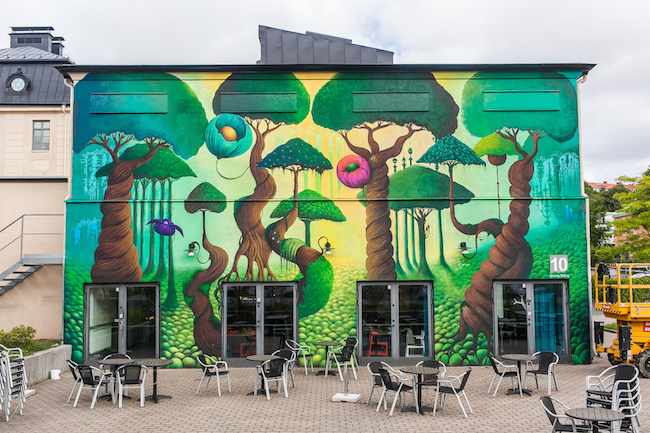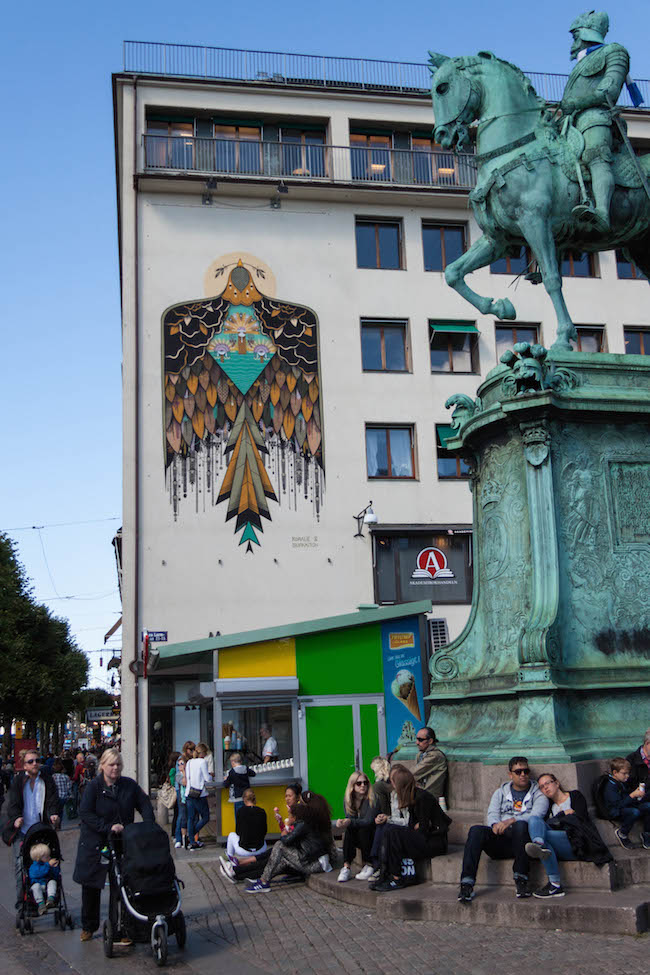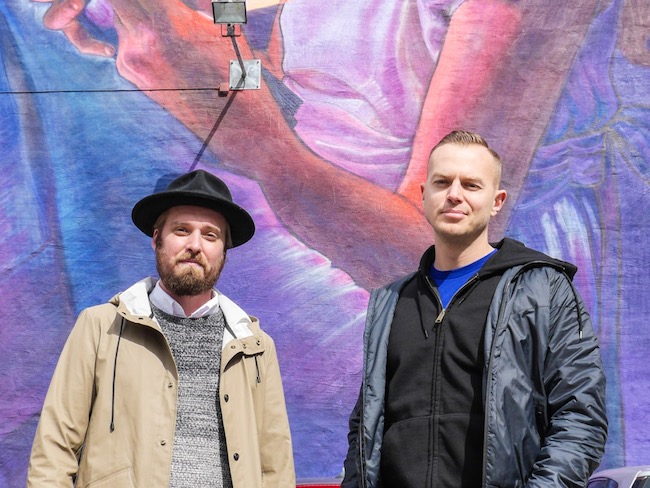
Artscape - geographically scattered and globally unique
Q&A with Tor Hedendahl and Daniel Wakeham, Founders & Directors of the International street art festival Artscape in Sweden
17/07/2017
Artscape 2017 “White Moose Project”
Värmland, Sweden
July 24 - August 18, 2017
The times when street artists were supposed to altruistically serve the public, act as the Robin Hoods of the concrete jungle, fight against the visual noise of commercial corporations, and point out injustice in situations of power and authority – all while asking for nothing in return – are over. Right now, all over the world, carefully coordinated and organized street-art events are growing in increasing numbers. One of these festivals that has taken on serious momentum is Sweden’s Artscape. It is being organized as a non-profit event by Tor Hedendahl and Daniel Wakeham, for whom one of the main driving points for the fair is to change the Swedish population’s current opinion of urban art, which is basically one of zero tolerance.
The last time that spoke with the enterprising duo of Tor Hedendahl and Daniel Wakeham was in 2014, when the very first Artscape took place in Malmö.
This summer, 23 artists from all over the world will join Artscape in taking over almost the entire county of Värmland, including 10 of its 16 municipalities. Between July 24 and August 18, large-scale public art will be created in Arvika, Filipstad, Forshaga, Grums, Karlstad, Munkfors, Sunne, Säffle, Torsby, and Årjäng.

Artscape 2016. JARUS & RONE. Photo: Fredrik Åkerberg
In this express interview, in addition to revealing their observations of how the genre of street art has changed over the last few years, Hedendahl and Wakeham do not hide their ambitious hopes for the festival’s growth.
As stated in this year’s Artscape program, this will be the biggest festival project yet. Could you please elaborate more on how the festival has widened its scope, how it has changed over the years, and where it is heading?
Tor Hedendahl: We always try to come up with new ideas for our projects. I think that both Daniel and I are much too restless to do the same thing over and over again. When we last spoke, we were in the middle of creating Sweden’s first street-art festival ever. Last year we did Scandinavia’s largest street-art festival by creating art in every borough of Gothenburg, Sweden’s second-largest city. This year we’re taking it to another level regarding the number of artworks, the way we’re involving the communities, and the geographic spread of the project. Who knows where we will be next year?
Daniel Wakeham: Artscape as an organization isn’t geographically bound to any specific city or country, so Tor and I are completely free to change things around and to reinvent our set-up between projects. We have concentrated on Sweden so far because it’s a country with a recent history of zero tolerance to urban art and a very conservative attitude towards what we do. Helping to change all of that may be a challenge, but it’s very rewarding! Why preach to the choir?

Artscape 2014. SMUG. Photo: Emil Malmborg
This year’s festival will take place in the County of Värmland and artists will create large-scale public art in several municipalities. Could you please elaborate more on the idea behind this expansion of the festival’s territory?
T.H.: When we did Artscape 2016, our goal was to make people visit the entire city of Gothenburg. It’s a city that is very spread out, and most people have just visited their own local area and the city center. Through our project, we managed to make people visit the whole city in order to see the artwork created by the artists. The social aspects of this are amazing, and we toyed with the idea of applying this to a whole county. And that is just what we plan to do this year – by connecting ten municipalities in one central county in Sweden: Värmland.
D.W.: The theme of altering how both inhabitants and visitors move around within a city has evolved and grown stronger throughout each project. Now we’ve taken it a step further and we’ve gone all-in! The logistics is a nightmare to be honest, but we are always trying to push ourselves further and this is the next (big) step.

Artscape 2016. ANAMARIA. Photo: Fredrik Åkerberg
How would you describe the city’s urban environment before, and then after, the festival has anchored itself in Värmland?
T.H.: I would say that Värmland is a very diverse county. It has Karlstad, which is considered a big city by Swedish standards, but there is also Munkfors, which is one of the smallest municipalities in Sweden.
We built the economic structure of the project so that all of the municipalities in the county could take part; this has really have given us the chance to bring the project to the whole county. I would say that it is not only the physical appearance of the urban environment that will change after the project, but also the way Värmland approaches this art form. Hopefully, as a result of Artscape 2017, the municipalities will collaborate and create more opportunities for artists and future projects like this one.
D.W.: The rural nature of Värmland is a very interesting angle to Artscape 2017. Normally, the big mural festivals around the world are all set in typical urban areas, but if you ask me, there is no real reason for it to be that way. I remember reading about The Barnstormers in Juxtapoz Magazine like ten years ago and being very inspired.

Artscape 2016. HENRIETTA. Photo: Raimo Orava
Have you observed any changes in street-art trends since we last spoke in 2014?
D.W.: Things are changing very fast in the street-art world, and it’s a struggle these days even defining the art form itself… even the name “Street Art” doesn’t really seem to cut it anymore. We often use “Contemporary Urban Art” instead.
A more practical change during the last three years is the growing number of female artists coming through and making waves. We like to think that we have helped a little through being the first major festival to (unofficially) enforce a 50/50 artist gender split.
We also see a change in the anonymity of the artists we work with – more artists feel that they can be open with their true identity now. It’s interesting that we have noticed a difference in just three or four years.
T.H.: Yes, it will be really interesting to see where it all leads.

Artscape 2016. KORALIE & SUPAKITSCH. Photo: Fredrik Åkerberg
What would you say are the highlights of this year’s festival?
D.W.: Part of the Artscape way of working is that no single part of any project is prioritized. All artwork created and every workshop is of equal importance. For me personally, the highlight is always when someone I don’t know express happiness about what we have created. Luckily it happens a lot! Ha ha!
T.H.: I am really happy that we, yet again, have managed to gather a very strong line-up with lots of great artists. It is also awesome to be able to bring a whole county together through this project, and I would say that this is what highlights this project compared to the ones we’ve done before.
